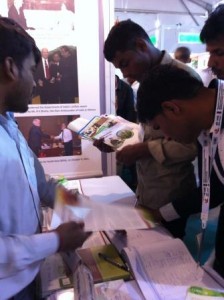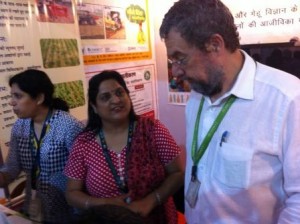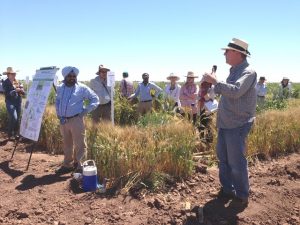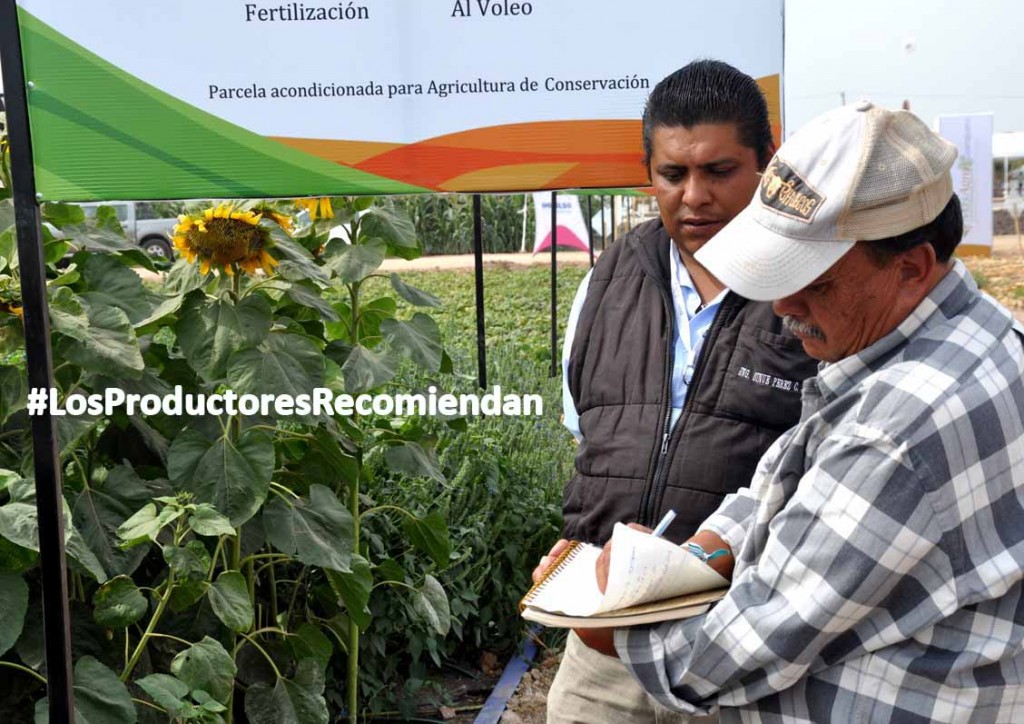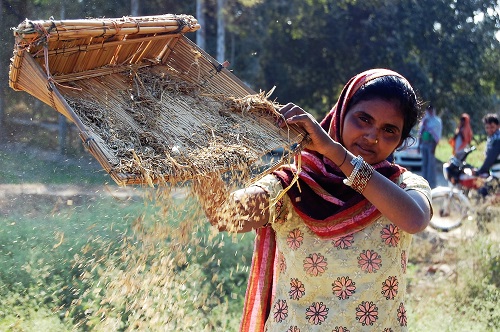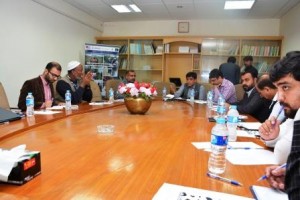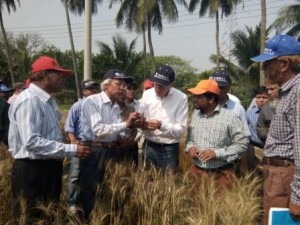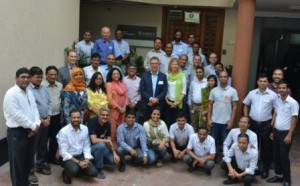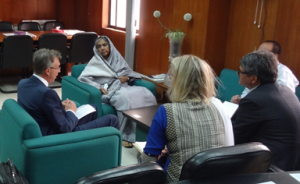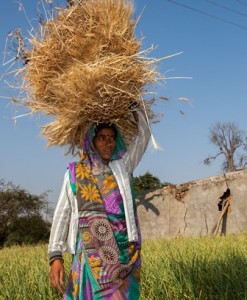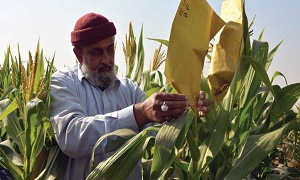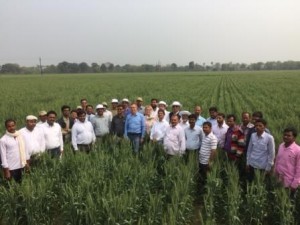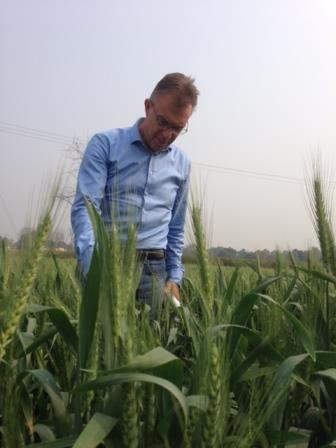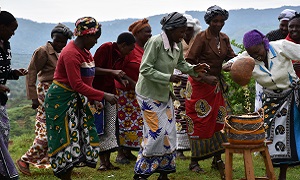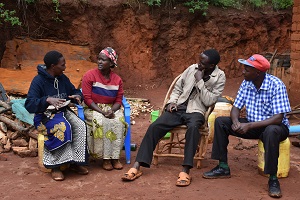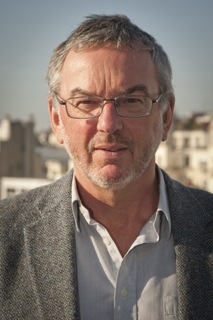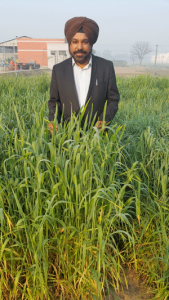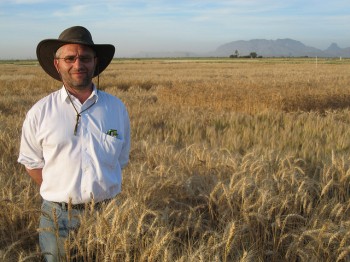 EL BATAN, Mexico (CIMMYT) – Scientists battling to increase wheat production by more than 60 percent over the next 35 years to meet projected demand are optimistic that they have begun to unravel the genetic mysteries that will lead to a more productive plant.
EL BATAN, Mexico (CIMMYT) – Scientists battling to increase wheat production by more than 60 percent over the next 35 years to meet projected demand are optimistic that they have begun to unravel the genetic mysteries that will lead to a more productive plant.
A recent study conducted at 26 international sites with a new generation of improved wheat breeding lines crossed and selected for superior physiological traits, resulted in yields that were on average 10 percent higher than other wheat varieties.
In the study, scientists identified many useful traits in the wheat plant suited to heat and drought adaptation, including: cooler canopy temperature indicating the ability of the plant to access subsoil water under drought and root proliferation under hot irrigated conditions.
They also discovered the plants have the ability to store sugars in the stem when conditions are good and the capacity to remobilize them to the grain when needed for seed filling if conditions do not permit enough photosynthesis. Leaf wax also plays a role by reflecting excess radiation and reducing evaporation from the leaf surface, lowering the risk of photo-inhibition and dehydration.
Additionally, scientists discovered that total aboveground biomass, a trait, which indicates overall plant fitness and with the right crossing strategy can be converted to produce higher grain yield.
“What we have revealed is a proof of concept – namely that designing crosses on the basis of wheat’s physiology results in a range of novel genotypes with significant improvements in yield and adaptation,” said Matthew Reynolds, a distinguished scientist and wheat physiologist at the International Maize and Wheat Improvement Center (CIMMYT).
“We have a long road ahead, but we hope eventually this work will lead to the discovery of the best combinations of genes suited to specific heat and drought profiles.”
HEAT STRESS
Climate change poses considerable risks to food security and political stability. Wheat is a vital food staple providing 20 percent of the calories and protein consumed by people worldwide.
Projections indicate that it is very likely that rainfall will be more unpredictable and that heat waves will occur more often and last longer throughout the 21st century, according to a report from the Intergovernmental Panel on Climate Change (IPCC). Mean surface temperatures could potentially rise by between 2 to 5 degrees Celsius or more, the report said.
A recent comprehensive modeling exercise, which incorporated data from international heat stress trials led by CIMMYT’s wheat physiology team in the 1990s, shows that for each degree increase in average temperature, there is a 6 percent reduction in wheat yield, so an increase of 5 degrees would lead to a 30 percent reduction or more.
“A 30 percent yield reduction would be very harmful to food security because we know that wheat production must increase by 60 percent just to keep up with population projections,” Reynolds said. “Combined with predicted climate risks, the challenge increases – if this happens, we’ll need to double the yield capacity of our current varieties.”
While demand for wheat is projected to increase at a rate of 1.7 percent a year until 2015, global productivity increases at only 1.1 percent. Conventional breeding approaches achieve less than 1 percent per year, a yield barrier that scientists aim to break.
“If the relative rate of improvement in yields continues at its current pace, there will be a large gap between the amount of available wheat and the amount we need to feed the global population,” Reynolds said.
LESS THIRSTY PLANT
Research findings will be developed under the International Wheat Yield Partnership (IWYP) and the Heat and Drought Wheat Improvement Consortium (HeDWIC), aiding the development of molecular breeding methodologies which will complement the trait-based approach.
Under IWYP and HeDWIC scientists will be redesigning the wheat plant for adaptive traits relating to temperature extremes, photoperiod, soil depth, and other environmental factors. Other goals will include attempting to drastically increase radiation-use efficiency, and to understand how plants use signaling to coordinate their activities and respond to environmental fluxes.
Such crops as rice and triticale can be used as potential models for wheat redesign. Rice is similar to wheat in terms of its basic metabolism, but tolerates much higher temperatures, Reynolds said. Triticale could also be used as a model, since it almost never lodges – or falls over – and its spikes have a very high grain number, he added.
Scientists also aim to increase their understanding of the role of roots and their potential to boost yield and ability to adapt to stress.
Because roots are hidden and messy to work with their physiology has been largely ignored in comparison to the parts of the plant above ground, but new technologies are helping to overcome these disadvantages, Reynolds said.
Such challenges are now more feasible to tackle due to a new generation of genomics tools and other biotechnologies which become more powerful each year.
“The revolution in phenomics – work that the Wheat Physiology Group helped pioneer – especially remote sensing for temperature and spectral indices, which indicate specific physiological properties of the plant-, means that we can now evaluate a much larger numbers of lines than in the past,” Reynolds said.
“We’ve already screened 70,000 accessions from the World Wheat Collection in the CIMMYT Genebank, and have identified a veritable powerhouse of novel material to support this work related to breeding and gene discovery for decades to come. So although the challenge is enormous, we remain optimistic.”
Follow @WheatPhysiology on Twitter
RELATED RESEARCH
International Wheat Yield Potential Proceedings
Physiological traits for improving heat tolerance in wheat
Achieving yield gains in wheat
Translational research impacting on crop productivity in drought-prone environments
